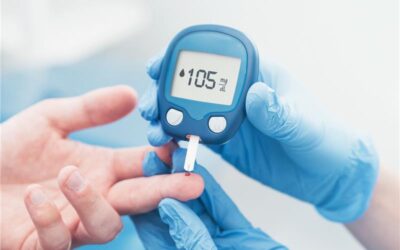Case Study
Safety and Efficacy of Treatment for Nonalcoholic Liver Disease
In this clinical trial designed to look at the safety and efficacy of CMAs, Metabolon helped reveal the underlying molecular mechanism in nonalcoholic fatty liver disease (NAFLD) patients.
Metabolon helped reveal the underlying molecular mechanisms associated with reduced hepatic fat and inflammation in NAFLD patients and identified the key players. These findings suggest that targeting multiple pathways by CMAs is a potentially effective pharmacological therapeutic strategy for NAFLD patients.
Metabolon helped reveal the underlying molecular mechanisms associated with reduced hepatic fat and inflammation in NAFLD patients and identified the key players. These findings suggest that targeting multiple pathways by CMAs is a potentially effective pharmacological therapeutic strategy for NAFLD patients.

The Challenge: Testing the Safety and Efficacy of Drugs for Nonalcoholic Fatty Liver Disease
Nonalcoholic fatty liver disease (NAFLD) is a condition in which excess fat accumulates in the liver of people who drink little or no alcohol. NAFLD comprises pathologies that include hepatic steatosis, steatohepatitis, hepatic fibrosis, and cirrhosis. Current management strategies include increased physical activity and dietary intervention but have limited adherence and marginal long-term success. No drugs have been approved to treat NAFLD; therefore, effective treatment options are urgently required. Although a few drugs have made it to clinical trials, the results of drugs targeting single pathways have been mostly unsuccessful. This research group recently found that the administration of combined metabolic activators (CMAs) promotes fat oxidation, attenuates the resulting oxidative stress, and eventually removes excess fat from the liver. In this phase 2 clinical trial, Metabolon helped reveal the mechanism of CMAs in NAFLD patients.1
Metabolon Insight: Characterizing Combined Metabolic Activators (CMA)
In this study, the Metabolon Global Discovery Panel was used to profile the plasma of NAFLD patients on CMAs (n = 19) or placebo (n = 11) to test the efficacy and safety of CMAs in NAFLD patients. Plasma samples were collected on Days 0, 14, and 70 of treatment. The Global Discovery Panel’s unrivaled coverage of up to 5,400 semi-quantifiable metabolites offered this group the most comprehensive solution for characterizing the metabolic signature of the plasma samples, revealing the underlying molecular mechanisms associated with the decrease in liver fat in the CMA group.
The Solution: Metabolomics Helps Reveal the Mechanism of CMAs
Here, metabolomics was used to help test the safety and efficacy of CMA in NAFLD patients. Untargeted metabolomics of plasma samples identified 1,032 metabolites. Metabolomics showed that 110 metabolites differed significantly on Day 70 versus Day 0 in the CMA group; 44 metabolites were involved in lipid metabolism. Fatty acid oxidation and carnitine metabolism were significantly upregulated on Day 70 versus Day 0 in the CMA group, as judged by the high plasma levels of deoxycarnitine, acetylcarnitine, and butyrylcarnitine. Plasma levels of kynurenate, kynurenine, and 3-amino-2-piperidone were significantly lower on Day 70 versus Day 0 in the CMA group. On the other hand, the kynurenate and 3-amino-2-piperidone plasma levels were significantly increased on Day 70 versus Day 0 in the placebo group.
Metabolomics analysis also revealed decreased metabolism of purine and xanthine in the CMA group on Day 70. Specifically, plasma levels of urate, xanthine, hypoxanthine 5-acetylamino-6-amino-3-methyluracil, 1,7- dimethylurate, and theophylline were significantly downregulated in the CMA group on Day 70. N-trimethyl-5-aminovalerate (TMAVA) was the most significantly reduced metabolite in the CMA group on Day 70 and was substantially lower than in the placebo group. Metabolomics data also demonstrated that the plasma level of N,N,N-trimethyl-alanylproline betaine (TMAP) was significantly downregulated in the CMA group on Day 70.
The Outcome: CMAs are Potentially an Effective Therapy for NAFLD Patients
This study showed that CMAs are safe and well-tolerated in NAFLD patients. The research group integrated plasma metabolomics data with inflammatory proteomics and oral and gut metagenomic data to reveal the underlying molecular mechanisms associated with reduced hepatic fat and inflammation in NAFLD patients, and identified the key players involved. These findings suggest that targeting multiple pathways by CMAs is a potentially effective pharmacological therapeutic strategy for NAFLD patients.
References
1. Zeybel M, Altay O, Arif M, et al. Combined metabolic activators therapy ameliorates liver fat in nonalcoholic fatty liver disease patients. Mol Syst Biol. Oct 2021;17(10):e10459. doi:10.15252/msb.202110459






